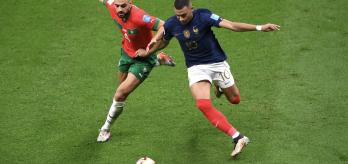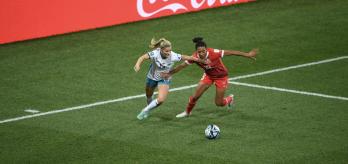Football has become increasingly data-driven in recent years, and more and more clubs have invested in electronic systems designed to measure the loads players experience in training. In this session, Dr Kobe Houtmeyers examines how these systems work and considers how coaches might use them to optimise their training programmes. The session is followed by a Q&A, hosted by Dr Paul Bradley.
Define the concept of training load and explain how it is measured. Highlight some of the pitfalls associated with training load data and how to take them into account during analysis.
Training load is divided into external and internal load. There are various different ways of measuring load, but no method is perfect. With that in mind, focusing on isolated statistics rather than overall trends is a risky approach to take.
In order to draw sound conclusions about training load, you need to collect data over a prolonged period. Analysts should look to identify long-term patterns rather than focusing on specific data points. Finally, although monitoring data can be useful, it is not a substitute for human decision-making; it is designed to be a complement to the decision-making process, not the main consideration behind it.
Watch presentation
Read summary
Part 1: Concepts and definitions
Dr Houtmeyers begins by defining the concept of training load. Overall load is divided into “external” load (what the player actually does during training and what can be observed on the training pitch) and “internal” load (the internal responses of the player’s body during training, such as changes in heart rate). The other important definition to bear in mind in this context is that of “monitoring” – the act of watching a situation carefully over a prolonged period of time. Training load monitoring aims to reveal the loads experienced by players in a given training programme, and that requires long-term observation.
Part 2: Measuring external load
External load data can be collected by a number of different methods, including the use of optical, local positioning, or Global Navigation Satellite System (GNNSS)-based tracking systems. Each of these systems has its own strengths and weaknesses, and the data they produce can be complemented by more complex micro-electrical mechanical systems (MEMS), which allow analysts to measure the impact of collisions, jumps and other specific events. While many external load metrics can be analysed quite confidently, caution is still needed when analysing metrics that reflect explosive and dynamic activities like jumping and sprinting.
Part 3: Measuring internal load
Measuring internal load accurately is considerably more difficult than measuring external load, because there are fewer tools available and they tend to be subjective or difficult to measure reliably (such as heart rate belt movement). The main indicators used to measure internal loads are heart rate (which is appropriate for aerobic exercise but less so for anaerobic work) and perceived effort, which is highly individual, subjective by definition, and relies on the honesty of your players. Significantly, neither of these measures reveals very much about internal musculoskeletal load, and understanding this specific type of load is key to assessing injury risk.
Part 4: Analysing the data
All this data is useless unless you can draw appropriate conclusions from it. In the final part of his presentation, Dr Houtmeyers provides some guidance as to how to make best use of load data. He notes that there are limits to what the data can tell you, and it is advisable to use it to identify general trends rather than focusing on a single variable. Moreover, it is not a substitute for common sense or experience. In the end, it is still down to coaches to manage training load, fatigue, and the effects of fixture congestion on their players.
Q&A
01:17
The first question is about selecting metrics. There are so many we can monitor, but how many would you include, and which ones?
04:19
If a practitioner wanted to use a subjective monitoring tool like Rate of Perceived Exertion (RPE), what could they do to make sure players were properly engaged and honest about perceived exertion?
06:40
If we don’t micromanage data, how do we know which changes in the data are meaningful?
08:28
The next question is about context. Most of the published works don’t give any context on things like the types of sessions that make up accumulated load. Do we need to get better at describing how load is achieved, as well as the total load at play?
11:03
We’ve heard recently from people like Jürgen Klopp, Thomas Tuchel and Erik ten Hag about new directives, increasing game time, and tough schedules. What would your advice be for coping with these increasing demands in the modern game?
14:12
How can we manage load from a position-specific and individual perspective?
16:29
What would your key advice be for monitoring load, based on the scientific literature?











